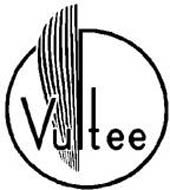|
Gerard "Jerry" Vultee (1900-1938) has been described
as a little known man who played a leading role in the drama
of aviation in America. Born in Brooklyn, New York, he showed
an interest in aircraft at an early age, building model planes.
The Wright Brothers flew at Kitty Hawk in his infancy, and
as he grew he had the opportunity to watch aviation grow with
him from infancy to the brink of the dominance enjoyed by
military aircraft in World War II.
In 1912 his family moved to Ocean Park, California, and he
attended Cal Tech from 1921-23, studying aviation science.
As a student project he designed and built a full-sized aircraft.
In 1923, Art Mankey, who was then in charge of engineering
at Douglas Aircraft, hired Vultee as a structural aeronautic
engineer. Also at Douglas was Jack Northrop who was working
on an idea for a commercial aircraft, the Vega. Since Douglas
was doing military aircraft at the time, Northrop took his
idea to mentor Alan Loughead (spelling later changed to "Lockheed.")
In 1928, Northrop invited Vultee to join him and they built
the Vega, one of the most popular planes of its day. Wiley
Post, Amelia Earhart and Charles
Lindbergh all flew and adored it.
In 1928, Northrop left the young company, and Vultee became
Lockheed's new chief engineer. He designed the Sirius for
Lindbergh which brought him some notoriety.
Jerry Vultee landed at Tucson Sunday, March 30, 1930. He was a passenger in Lockheed Vega NC522K. His pilot was none other than Wiley Post. They were eastbound from Burbank, CA to El Paso, TX. No purpose was cited in the Register for their trip.
Some of the innovations he helped introduce were the engine
nacelle or cowling, the fully retractable landing gear, replaceable
fuselage panels, the V-type windshield, and Vultee large wing
flaps that made it possible to reduce landing speeds.
But genius was not enough in the face of the Great Depression.
Controlling interest in Lockheed was purchased by the Detroit
Aircraft Corporation. In 1931 it went into receivership, and
Vultee was replaced as chief engineer by Richard Von Hake.
Vultee accepted a job developing and teaching drafting and
engineering courses at the Curtiss-Wright Technical Institute.
He also took a post as chief engineer for the E.M. Smith Corporation
(EMSCO) in Downey. But the Depression smothered new designs
at EMSCO as well and he left.
E.L. Cord (Cord car company) was an entrepreneur looking
for new fields, and had founded an airline. He needed a new
commercial plane. Fortunately, Vultee had been working with
Vance Breese on the V-1 (V for Vultee), which was just what
Cord wanted. With Cord's financial support, Vultee and Breese
established the Airplane Development Corporation (ADC), a
division of the Cord Corporation. Vultee was vice president.
The V-1 was a popular aircraft, and American Airways ordered
10. Completed as a prototype in 1933, it was the fastest plane
of its kind with a top speed of 235 mph. When modified by
American Airways it was known as the V-1A. A license to manufacture
the plane was sold to Russia.
On another front, Vultee met Sylvia Parker, a Hollywood debutant,
while surfing in Southern California. They married on Jan.
19, 1935, and flew to Mexico City for their honeymoon in a
new V-1A.
The Federal Aviation Administration (FAA) created an unexpected
reversal of fortune by ruling that all commercial passenger
planes be mult-engine. The V-1A was single engine, and was
thus grounded for passenger use. Cord reorganized his holdings,
and Vultee Aircraft abandoned its commercial aircraft enterprises.
Vultee was aware of the growing threat of war on many fronts,
and converted the plane to a dive-bomber known as the V-11.
When orders began to roll in he needed a larger production
site, and he recalled the EMSCO plant in Downey, CA. He relocated
there from his cramped quarters in Glendale, and renamed the
small Downey airstrip Vultee Field. By 1938 500 people were
employed here.
The Vultee planes built in Downey flew in the Spanish Civil
War, and in defense of the Chinese Nationalist government.
They were purchased by both Russia and Germany, and in 1937
the Downey plant was renamed the Vultee Aircraft Division
of the Aviation Manufacturing Corporation.
Jerry and Sylvia Vultee were flying home from Washington,
D.C. after presenting a new aircraft to the Army when their
plane crashed, killing them both. It was January, 1938, and
a black day for aviation, but the company Vultee founded went
on in his tradition of innovation and discovery. A news article appeared in the Cottonwood, AZ Verde Independent on August 30, 2011 that described the accident and the circumstances around it. Thanks to site visitor Sky Shipley for calling the article to my attention.
Some issues surrounding the Vultee's death were clarified
by this letter to Time Magazine February 21, 1938:
"Sirs:
Gerard F. Vultee ("Jerry"), not Gerald,
my close friend and business associate for many years,
was killed when the cabin monoplane he was flying with
Mrs. Vultee crashed on the flat top of Wilson Mountain
[TIME, Feb. 7]. ... Caught in a local snow-storm and
blizzard with no training in blind or instrument flying,
he was unable to find his way out. The fire occurred
after the crash, not before.
DON P. SMITH Vice President
Vultee Aircraft Los Angeles, Calif." |
In 1941 Vultee Aircraft purchased controlling interest in
the Consolidated Aircraft Corporation in San Diego. The company
became Consolidated Vultee Aircraft Corporation, or "Convair,"
and produced more than 13,500 aircraft during the allied war
effort in World War II.
---o0o---
Dossier 2.1.189
UPLOADED: 01/09/06 REVISED: 07/18/09, 08/12/12
|

